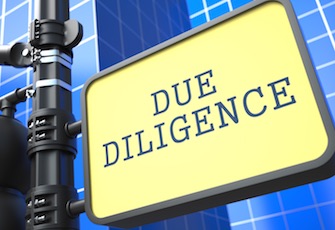 Assignments are the mechanism to transfer title of a patent, just like deeds are used to transfer real estate.
Assignments are the mechanism to transfer title of a patent, just like deeds are used to transfer real estate.
Assignments are recorded at the USPTO and are available to the public. On the USPTO website[1], a search for the company or inventor will show assignments as they are recorded. This website will show that an assignment exists and the parties to the assignment, but to get an actual copy of the assignment someone needs to visit the USPTO in person. There are third party services that will get the USPTO copies for a fee.
One of the flexible things about assignments is that different rights to a patent can be assigned to different people. For example, a patent can be assigned to a third party but can grant the previous owner a paid up, royalty-free license to use the technology. These provisions are only shown in the documents available at the USPTO and not online.
For due diligence, the owners of the patents should provide all of the assignments in a chain of title. The chain of title always starts with the inventor and will progress to the current owner. If there are any license agreements relating to the patents, each of the previous owners of the patents should provide copies of the agreements.
Startups typically use assignments that come from their patent attorneys. Normally, these are ok, but often these assignments were written years ago and have been reused for decades since the patent attorney started practicing.
One of the items most often omitted is the right to “causes of action”, which include the rights to sue for past damages. This is not important when the invention is created, because there is no past infringement, but it is important when patents are transferred later on.
Another thing to look for in the chain of title are any security interests in the assets. Just like a mechanic’s lien on real estate, the patents may be put up as collateral for a bank or some other institution. This typically does not happen in startups, but these will appear from time to time.
In most cases, a quick look at the USPTO assignments database will show the provenance of the asset. The inventor, patent attorney, or company should have the signed assignments for review.
What If There Are No Assignments?
For young startups or first time inventors, there may be no assignments at all. When this problem is encountered, no investment should be made for three months.
 The USPTO assignment rules are a race/notice policy. An assignee has three months to file an assignment, otherwise an earlier filed assignment will have priority.
The USPTO assignment rules are a race/notice policy. An assignee has three months to file an assignment, otherwise an earlier filed assignment will have priority.
This means that there is a possibility that the patents were assigned to someone else in the last three months, and that person has not yet filed the assignment with the USPTO.
When there are no assignments recorded and the patent application has been around for a long time, the assignee must file an assignment, then wait three months to see if any other assignments are filed. If the three months pass without incident, the assignment is valid.
There are all sorts of scenarios where an entrepreneur, hungry for money, assigns their patents to someone for cash. They might not even know that it happened, as it could have been in a stack of papers or even a paragraph in some deal they signed.
The company needs to have solid chain of title to the assets. Until that is set in stone, stay away from the investment.
Inventorship Issues
Inventorship issues are one quick way to sink a patent. One of the worst things that someone can uncover is that there are problems with who was listed on the patent.
When patents get litigated, the patents can be attacked on the merits by arguing that the patent was issued incorrectly or that the patent examiner did not interpret the prior art correctly. This is long and tedious.
One of the easiest ways to kill the patent completely is to argue that the inventors were incorrectly listed. If there was any impropriety, the patent can be completely invalidated without ever arguing whether or not it was properly granted.[2]
These problems come in two forms: people who are listed as inventors but should not have been, and people who are left off.
Having Too Many Inventors
Courtesy in Asia is that an inventor will always list their boss on a patent. This can happen in startups, too, where the CEO might not have anything to do with the invention, even though their name was listed first. When looking at a patent portfolio, especially with a long list of inventors, investigate who all the inventors are and what their area of expertise is.[3]
Here is a typical scenario where everything falls apart: Let’s assume that the names of a six-person startup team are all listed as inventors on a patent. The CEO (or the patent attorney) is too cowardly to tell one of the people that they did not contribute, so the CEO magnanimously adds everybody to the patent. What actually happens is that the person who actually contributed the biggest portion of the ideas is quiet, but very resentful.
When the patent is being litigated, or when an acquiring company is doing due diligence before they buy the company, someone asks about all the people listed on the patent. By the time this happens, some of the people have left the company. The investigator calls all of the inventors, because they are listed on the face of the patent, and asks about how the invention took place.
Inevitably, the inventor who was scorned will go into a tirade about how so-and-so was included on the patent when they contributed nothing. Alternatively, the inventor may state that they had absolutely nothing to do with the invention but they were included for some reason.
All of a sudden, the patent can be completely invalidated with a simple affidavit from the scorned inventor. When that asset is a key to the entire acquisition deal, it can fall apart completely.
Having Not Enough Inventors
On the other side of the coin, what about leaving off an inventor?
These problems are less severe mostly because they are harder to uncover. We do not have a list of people on the face of the patent to call. However, there is one place where this happens quite frequently:
Patents that come from startup accelerator companies have half the value.
Within the patent valuation community, the value of a patent of any company in a startup accelerator must be cut in two. Why is that?
The problem is inventorship, and here’s the scenario:
A bunch of startups are put in a big room and put through their paces. They learn lean startup methods, they hone their pitch, they build a minimum viable product, they get some customer data, they hone their pitch some more, and they present to investors.
All of these companies work elbow-to-elbow with each other. A CTO from one startup might be standing by the water cooler struggling with their minimum viable product, and a CTO from a second company may be there, too. The first CTO explains the problem and the second CTO offers a suggestion. The light bulb goes off and they find the key that unlocks the product. The first CTO gets a patent on the invention, but the second CTO believes (rightly or wrongly) that they contributed to the invention.
The value of the patents for accelerator companies is cut in half because there is no way for the second CTO to be listed on the first CTO’s patent. If they do list both inventors, both companies would have rights to the patent. If they do not list both inventors, the second CTO can cause the patent to be invalid.
The value is discounted 50% because there is a very strong possibility that another person in another company believes (rightly or wrongly) that they should have been an inventor but they were left off the patent.
It really does not matter if that person should have legally been listed as an inventor or not; what matters is what that person believes. The mere fact that someone is out there making noise that they should have been an inventor is enough to scare buyers away for good.
Patents And Proprietary Information Agreements
Every person, including the original founder, must have a patents and proprietary information agreement in place with the company.
These agreements cause all of the inventions created by the person to be assigned to the company.[4]
Founders are notorious for not having these agreements in place. They will often have them with employees, but the solo founder often will not sign one with the company. As an investor, this must be in place with everyone – including the inventor/founder.
These agreements are essential because they cause the company to be the owner of the invention at the time the document is signed. Once the document is in place, it can be substituted as a regular assignment and sent to the USPTO as an assignment. This is incredibly helpful when there are problems down the road, such as when an inventor leaves the company or decides that they try to hold the patent hostage for some kind of bonus.
Note: This is an excerpt from “Investing In Patents” by Russ Krajec. Russ is the founder and CEO of BlueIron IP, and investment company that finances intellectual property for angel and venture backed startup companies.
_______________
[1] See http://assignment.uspto.gov.
[2] Note that this is a feature of US law. In the US, patents are granted to “inventors”, but every other country, patents are granted to “applicants”, which can be an inventor or a corporation. The recent patent law now allows the applicant to be a corporation, but only after the inventor assigned their rights to the corporation.
[3] The legal definition is that a joint inventor or co-inventor must contribute at least one limitation to at least one claim to be listed as an inventor. The key here is that inventors must contribute to something that is in the final version of the claims. Often claims are amended and the inventorship is supposed to be updated, but this rarely happens in practice.
Patents with even the hint of inventorship issues are severely discounted in the secondary market and have almost no value.
[4] See Stanford University v Roche Molecular Systems, Inc. The key pint is that the agreement between the employee and employer must state that the employee “hereby assigns” their inventions, not “will assign” their inventions.

![[IPWatchdog Logo]](https://ipwatchdog.com/wp-content/themes/IPWatchdog%20-%202023/assets/images/temp/logo-small@2x.png)

![[[Advertisement]]](https://ipwatchdog.com/wp-content/uploads/2023/01/2021-Patent-Practice-on-Demand-1.png)
![[Advertisement]](https://ipwatchdog.com/wp-content/uploads/2024/04/UnitedLex-May-2-2024-sidebar-700x500-1.jpg)
![[Advertisement]](https://ipwatchdog.com/wp-content/uploads/2024/04/Artificial-Intelligence-2024-REPLAY-sidebar-700x500-corrected.jpg)
![[Advertisement]](https://ipwatchdog.com/wp-content/uploads/2024/04/Patent-Litigation-Masters-2024-sidebar-700x500-1.jpg)

![[Advertisement]](https://ipwatchdog.com/wp-content/uploads/2021/12/WEBINAR-336-x-280-px.png)
![[Advertisement]](https://ipwatchdog.com/wp-content/uploads/2021/12/2021-Patent-Practice-on-Demand-recorded-Feb-2021-336-x-280.jpg)
![[Advertisement]](https://ipwatchdog.com/wp-content/uploads/2021/12/Ad-4-The-Invent-Patent-System™.png)






Join the Discussion
One comment so far.
Anon
May 1, 2016 07:34 amOne (not so minor) correction:
The statement “Assignments are recorded at the USPTO and are available to the public.”
should read instead:
Assignments may be recorded at the USPTO and may be available to the public.
Contrary to the perception created, there is no actual legal requirement that assignments must be recorded.
Is it “smart” or “best practice” to do so? Sure. Are there situations that lend themselves to not doing so? Also sure.
The caveat should always be included informing a client that the due diligence is limited by this fact.